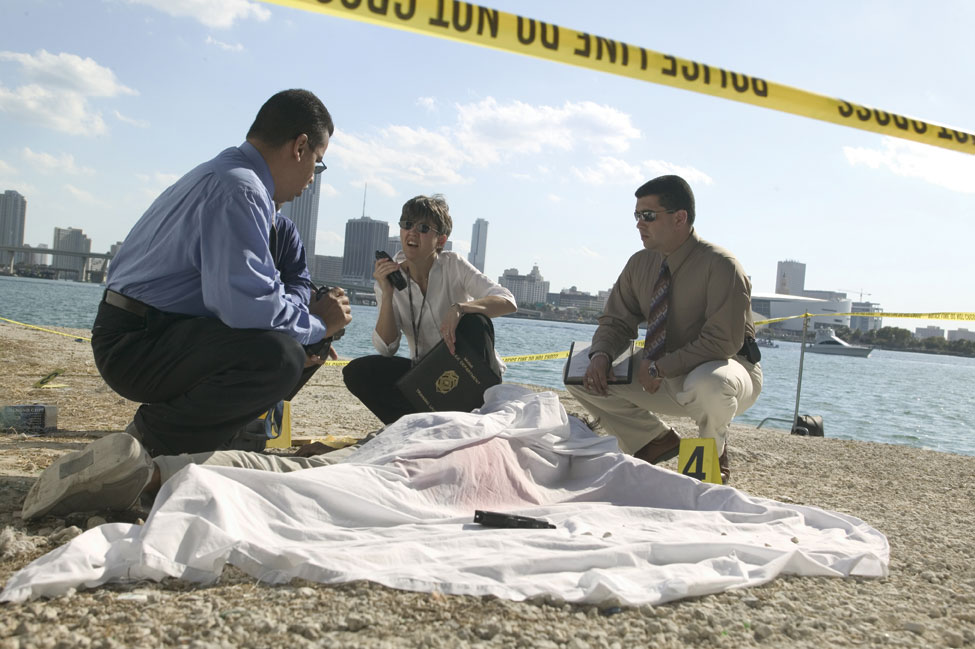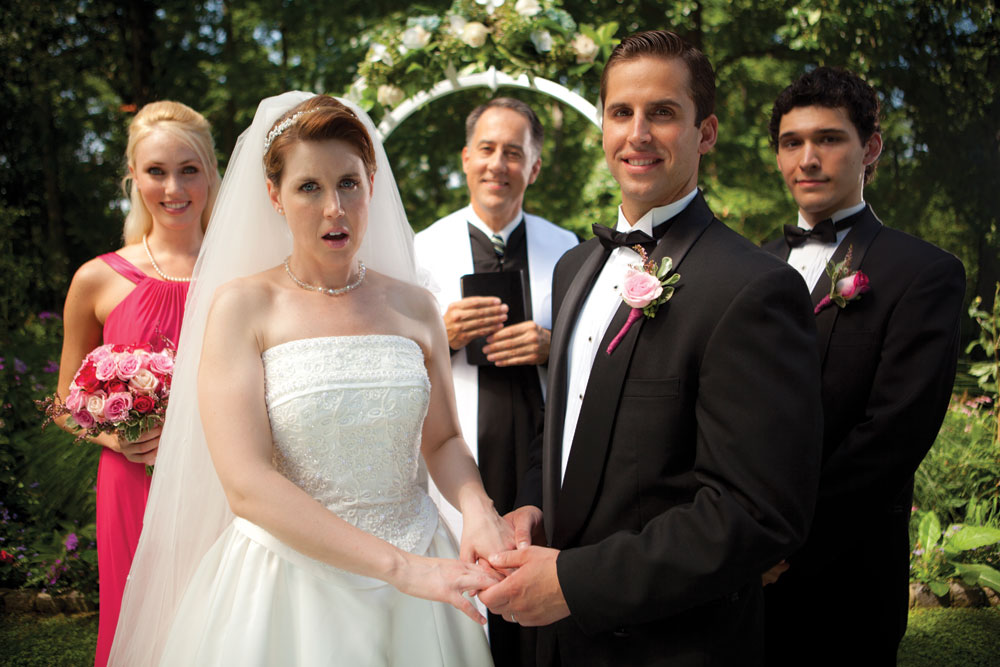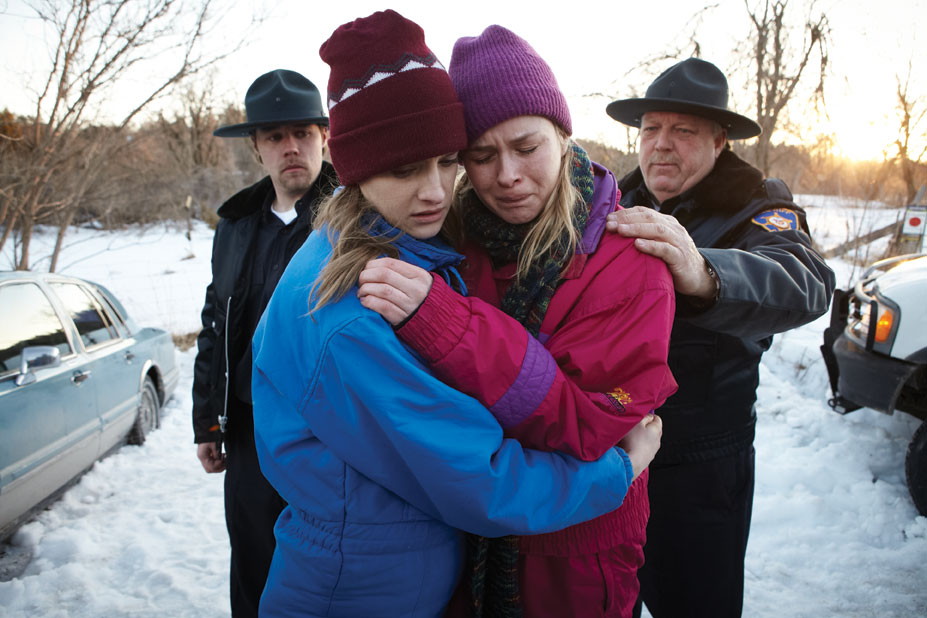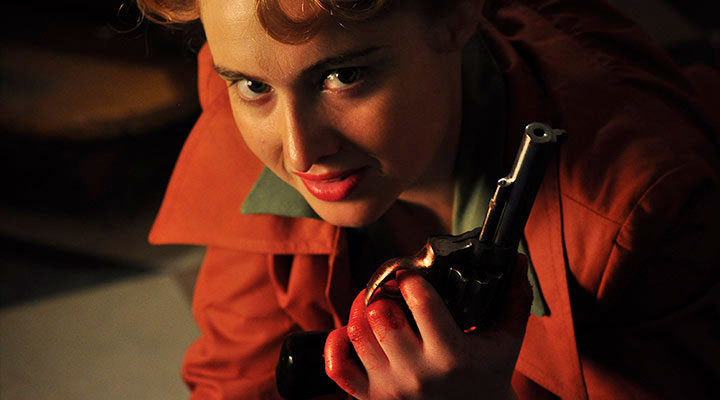
After more than 35 years of operation, TBI is closing its doors and our website will no longer be updated daily. Thank you for all of your support.
Guilty pleasures
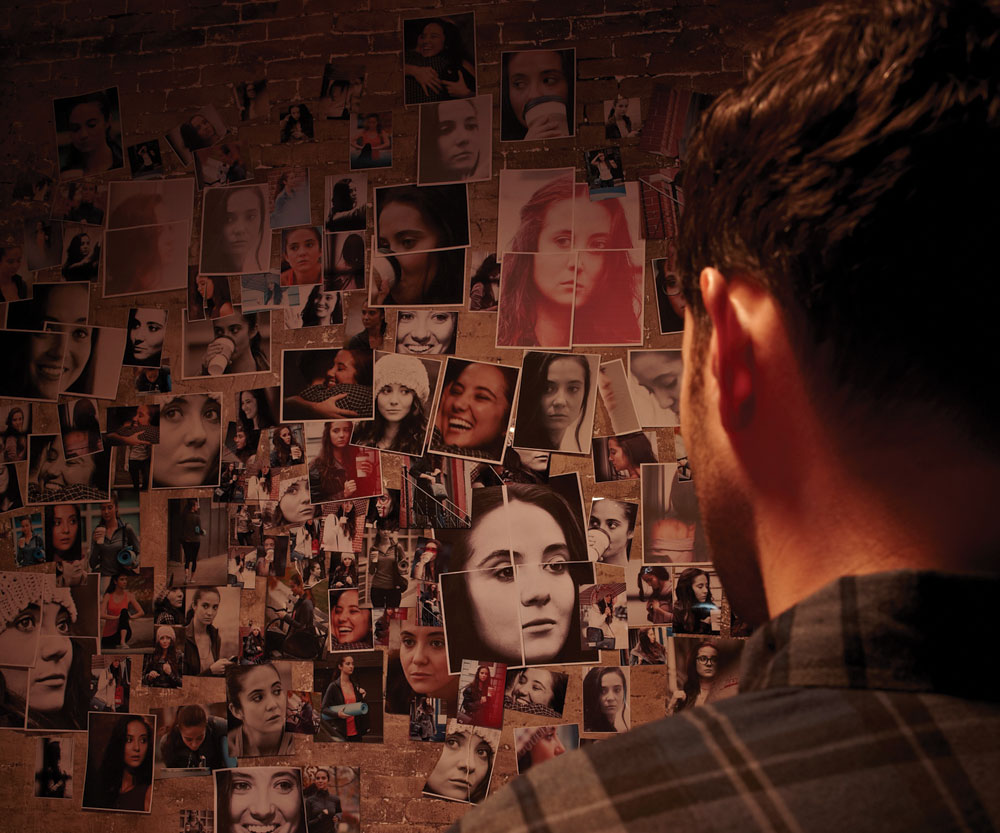 Murder. Bloodlust. Revenge. Jesse Whittock listens to testimony from leading executives and gathers evidence to deliver a verdict on why the true crime genre continues to deliver killer ratings
Murder. Bloodlust. Revenge. Jesse Whittock listens to testimony from leading executives and gathers evidence to deliver a verdict on why the true crime genre continues to deliver killer ratings
A s the ultra-popular podcast Serial has demonstrated, the true crime genre continues to defy expectations. The mix of blood, horror and investigation has captivated middle-aged female audiences in a remarkably powerful way, creating a TV sub-genre that keeps broadcasters, producers and distributors in the money.
In the US, Investigation Discovery is the market leader in cable: its defined brand makes it a comfortable destination for producers to create for, and for distributors to sell to. As one true crime producer puts it: “ID know its audience so well, from the top of the network through to the EPs making the shows.”
A+E Networks’ Crime + Investigation (CI) network targets the same audience with shows such as The First 48 performing consistently well. Internationally, A+E’s channels fare even better, with CI ranking as a top five factual network in Australia, South Africa, Singapore and Italy.
Other broadcast groups are getting in on the space, with the likes of RTL Crime launching in Europe and beyond, and Fox International Channels spreading its Fox Crime channel into new territories. Thematic networks have sprung up elsewhere such as Bell Media’s French-Canadian offer Canal D/Investigation.
True crime endures because it is a rare genre that virtually guarantees audiences. Gary Lico, founder of US indie LilOlMe and former CableReady owner, claims buyers say they can place his long-running Forensic Files series in any slot and secure ratings. “So if they have problems, they can put a few episodes on for a few weeks and it stabilises the time period,” he says.
The latest entrant to market comes with weighty backing. Free-to-air US multicast channel Justice Network counts a former Discovery Channel chief, an NBCUniversal domestic distribution boss and an ex-National Geographic Channels president among its top ranks, as it looks to carve out a piece of the hungry true crime audience.
As the network launches this month, its CEO, Steve Schiffman, tells TBI: “Globally, there are lots of channels that focus on the crime and investigation space. In the American market that we’re competing in initially there’s really only one channel of consequence competing that is branded as all crime, all the time – Investigation Discovery.”
He adds: “The common denominator that makes crime and investigation/mystery factual entertainment television so sticky is the great storytelling. The whodunnit element is almost addictive, like caramel popcorn.”
Schiffman pays tribute to ID’s branding and commissioning success, calling his new rival “an inspiration”. Justice Network will work from a core library of Turner Broadcasting crime series totalling 450 hours and others such as Alaska State Troopers from Schiffman’s old workmates at Nat Geo, where he was president until late 2011.
He says that besides operating in a different medium to ID and CI, the key main variance that makes Justice “unique compared with all other television channels” is that it is “devoting 90 seconds an hour, on the hour, every hour, 365 days a year” to missing children appeals, a ‘bad guy of the week’ announcement segment aimed at catching criminals and family safety tips with seasonal focus. “We’re literally putting our money where our mouth is by taking inventory away every hour,” says Schiffman.
“Since Court TV [became TruTV in 2008] there has been a gap” in the market for a new channel, says TCB Rights founder and CEO Paul Heaney. “TruTV has been doing crime since, but is not really in that area any more. There is definitely room.”
ID’s general manager, Kevin Bennett, says he does not consider Justice a direct competitor due to its different proposition, and that his network’s USP is its original content output. The 2014-15 season includes 11 new series such as Momsters: When Moms Go Bad and Heartbreakers and 22 returning shows including Who the (Bleep) Did I Marry and Surviving Evil.
“We’ve spent a lot of time and energy understanding the true crime genre and have a lot of passionate people working on it,” says Bennett. “Ultimately, one of the keys is to give the viewer a satisfactory ending. Any viewer that comes to the network knows they will get a payoff at the end of the hour. Not every mystery is solved, but they will know as much as we do.”
ID’s push into content spans various genres that prescribe to that doctrine of set-up and pay-off. One staple sub-genre, the scripted re-enactment documentary, includes segments that would not look out of place on network scripted television. Indeed, unscripted true crime has been the inspiration for shows as big as CBS’s CSI: Crime Scene Investigation.
UK-based indie October Films produces new season ID show Obsession: Dark Desires, which tells stories of infatuated stalkers and includes highly cinematic sequences that heighten the drama of its interview testimony.
“Obsession and [fellow ID series] A Crime to Remember have the look of scripted television,” says Bennett.
“If you can put money on the screen and make your series look like a Hollywood movie, you’re giving the audience a treat as they get the double whammy of seeing the person going through it and feeling every bump along the way,” adds Matt Robins, Obsession executive producer and October’s creative director.
Given that CBS this season launched Dylan McDermott drama Stalker, the drama theory appears to ring true. “To me, it’s really exciting that the big networks are looking at what we’re doing,” says Robins. It makes you remember that docu-drama and factual stories are at the forefront of storytelling in the US at the moment.”
Adds Bennett: “We certainly look to what CBS does with their true crime and know it is something we can emulate, as they really know their brand. It can certainly work the other way as well.”
The appeal of true crime programming lies in its “natural stories”, says UK factual prodco Woodcut Media’s founder, Kate Beal. “You very rarely find one that doesn’t end with a perpertrator banged up or given the death penalty. That’s satisfying from a viewer’s perspective: they go home and sleep well at night because the bad boys are in jail.”
Woodcut has produced docs on British crime legends as the Moors murders and the Kray twins for the likes of CI UK. That channel’s director of programming, Koulla Anastasi, says she aims to serve a “very hungry audience, which consumes a large amount of true crime – whether it’s factual, drama or TV movie”.
CI UK, a significant content commissioner, counts the Shiver-produced Britain’s Darkest Taboos among its biggest current slate shows. “You have a really core, loyal audience that is really sticky,” Anastasi says of the CI viewer. “They will come back night after night and watch the same show, which is a great testament to the content.”
However, with CI rolled out in various territories to positive effect, Anastasi says commissioning local content has become a more intricate process. “We have to be careful, as the UK channel is probably darker than the international CIs across the world.”
Indeed, A+E’s VP, international programming, production and operations, Sally Habbershaw, notes that attempts to create local CI content in South Africa were met with resistance. “There’s no appetite for local stories and people have actively pushed back against it,” she says. “We’ve been pitched the Oscar Pistorius story and have not committed to it.”
Instead, shows such as Beyond Scared Straight, The First 48 and The Killer Speaks are much more popular. “For our channels internationally, we replicate what works in the US,” says Habbershaw.
Meanwhile, though original commissions are the cornerstone of channel strategies, acquisitions remain a strong alternative. Significantly, they are far cheaper, too.
“We’ve just had Crimes That Shook Britain, which came through Cineflix and did fantastically well for us,” says Emma Westcott, commissioning editor of news, current affairs and documentaries at the UK’s Channel 5.
“What we find is there is lots of fantastic acquired content available, so we have think really hard about putting original commissioning funds in to a project,” she adds.
Cineflix Media CEO of rights Chris Bonney says the genre remains strong “on a continued basis. It’s more competitive than it was because more shows in the genre are being commissioned, but the strength of this genre is in delivering female audiences”.
Cineflix’s sale arm, Cineflix Rights, whose production sister arm creates various shows for ID, counts Wives with Knives, Unusual Suspects, Last Seen Alive, Motives & Murders and Surviving Evil as key performers. Actor Charisma Carpenter, who was the victim of an attack in 1991, hosts the show (her ordeal was recreated in one programme, which she says helped her work through the incident).
According to TCB’s Heaney, the sales market has improved after a drop-off a couple of years back. “Two years ago I was telling anybody who would listen that the genre was over-supplying but under-demanded. In certain territories you would have thought true crime was a shoe-in it was no longer the case. Rates dropped and it was very hard to get this stuff off the ground.
“Now you have more networks in Canada, Australia, the UK, CEE, the Nordics and France that are buying into the same genre. That’s good news for ID, as they can realise their ambitions without fully commissioning.”
TCB distributes true crime content from Transatlantic production group Argonon, and currently has shows such as ID’s Handsome Devils and Channel 5’s Left for Dead by the Yorkshire Ripper on its books. Both come from BriteSpark, the prodco former Cineflix doc boss Nick Godwin launched with Argonon.
Broadcasters like true crime for the strength of its brands – many series run for hundreds of episodes. Indeed, LilOlMe’s Lico says of Forensic Files (which is also sold as Medical Detectives): “The show is truly the gift that keeps on giving. There are so many episodes that it can be played once a day and it would not repeat in a year. Even twice a day would last 60% or 70% of the year.”
A+E’s Habbershaw points out CI can pick from 294 hours of ITV Studios America-produced doc series The First 48 – it also has double-digit hours for spin-offs After the First 48 and The First 48: Missing Persons.
Cineflix’s Bonney agrees volume is important when building true crime brands internationally. “You draw the attention of the buyer with the first season announcement, which will always bring some sales, but it is second season where you see a flow of new business. That’s promotable volume – if you get to 12-plus it’s a promotable season internationally.”
Beyond Distribution’s head of sales, Munia Kanna-Konsek, agrees: “One-offs are just sometimes too hard to schedule. Returning series give the property more credibility and proves its success.”
Kanna-Skonsek adds that Deadly Women is a best-seller for Beyond, with eight seasons and more than 100 episodes to its name.
The nature of long-running programme brands and success of acquired content means that formats have hardly made a ripple on the true crime scene. A+E’s Crime That Shook… brand is a rare example of an international export.
After Crimes That Shook Britain performed well in both the UK and Australia, where Foxtel operates CI under licence from A+E, CI Australia commissioned Crimes That Shook Australia.
“We invest in the Australian show,” adds CI UK’s Anastasi. “It came back and did very well for us over here because our audience was aware of the format. It wasn’t much of a change to watch Australian stories, even if they didn’t know them.”
However, Kanna-Konsek says true crime is “completely formattable. Each licensee or country would just have to dig into the crimes relevant to them. The hard work is already done and the success of the format proven, especially with repeat series.”
These dark, human stories of murder, betrayal and mystery are indeed at the core of the true crime proposition. After all, “people love to be armchair criminologists”, says Woodcut’s Beal.
The success of Serial, the National Public Radio podcast series about a mid-American teenage romance from the late 1990s, suggests appetite for the genre is growing, says ID’s Bennett.
The serialised nature of that property, whose tagline is ‘One story told week by week’, has not yet been fully utilised in television, though ID is exploring the space with character-lead shows such as Lt. Joe Kenda’s Homicide Hunter and Steven Rambam’s Nowhere to Hide.
As Bennett puts it: “If we can convince people that are so into the Serial viewers to become ID viewers, we’ve done our job.”
